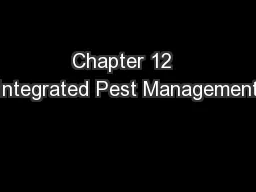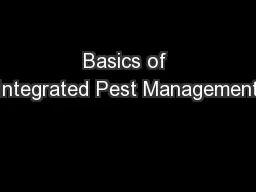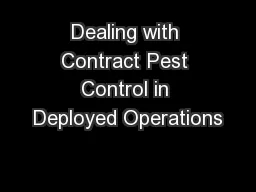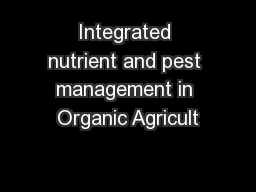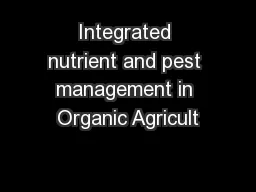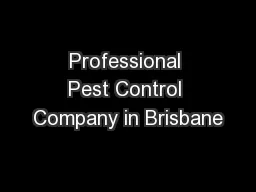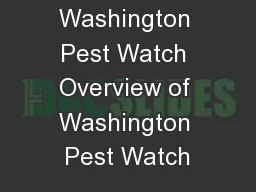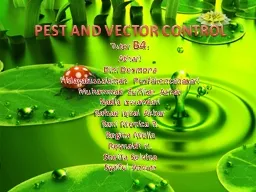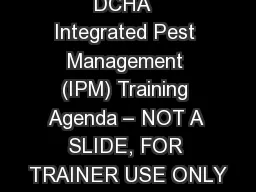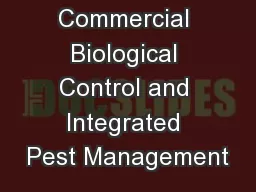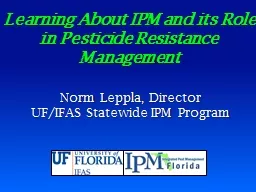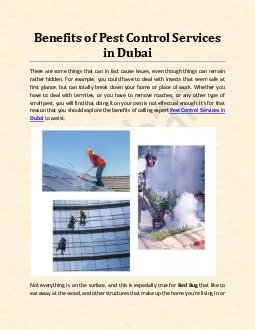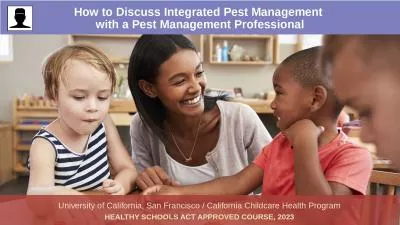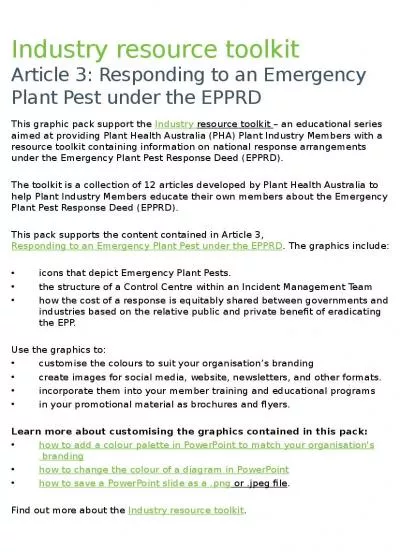PPT-Chapter 12 Integrated Pest Management
Author : conchita-marotz | Published Date : 2018-10-10
You Can Prevent This Implementing an integrated pest management IPM program Working with a pest control operator PCO Rules of an IPM Program Deny pests access to
Presentation Embed Code
Download Presentation
Download Presentation The PPT/PDF document "Chapter 12 Integrated Pest Management" is the property of its rightful owner. Permission is granted to download and print the materials on this website for personal, non-commercial use only, and to display it on your personal computer provided you do not modify the materials and that you retain all copyright notices contained in the materials. By downloading content from our website, you accept the terms of this agreement.
Chapter 12 Integrated Pest Management: Transcript
Download Rules Of Document
"Chapter 12 Integrated Pest Management"The content belongs to its owner. You may download and print it for personal use, without modification, and keep all copyright notices. By downloading, you agree to these terms.
Related Documents

